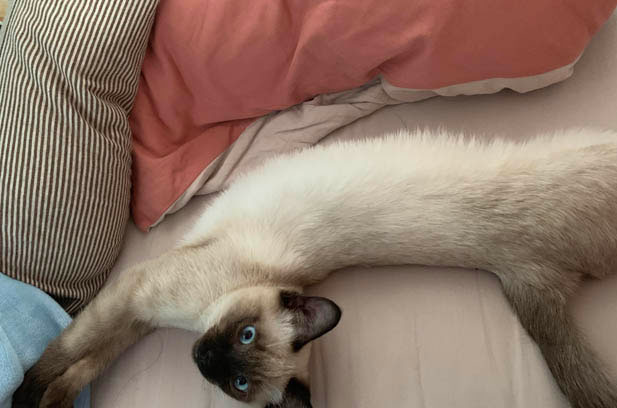Here’s a whimsical thought to start with: What if someone told you that Siamese cats are essentially black cats in disguise, starting off as white kittens and gradually reverting to their “true selves” as they grow, much like how dalmatians are born without their iconic black spots? It sounds fascinating, doesn’t it? But of course, this is just a playful jest. If you fell for this opening gambit, well, consider it a light – hearted prank! Now, let’s delve into the real, scientifically fascinating story behind the fur color changes of Siamese cats.
The key to understanding the unique coloration of Siamese cats lies within their genes. The TYR gene in Siamese cats plays a pivotal role as it is responsible for the synthesis of tyrosinase, an enzyme that acts as a catalyst in the production of melanin, the pigment that gives color to the fur. However, Siamese cats are partial albino mutants, meaning their TYR gene has undergone a mutation. This mutation results in an interesting quirk: the tyrosinase enzyme is inactive at normal body temperature but becomes active in areas where the skin temperature drops below 33°C.

This genetic anomaly is the very reason behind the distinctive “pointed” coat pattern of Siamese cats. As a result, in these regions, the tyrosinase enzyme becomes active, promoting the synthesis and deposition of melanin, which leads to a darker coloration, often appearing black or dark brown. In contrast, the central parts of their bodies, which maintain a higher temperature, remain lighter in color, creating a striking contrast.
Beyond genetics, other factors also contribute to the color changes in Siamese cats. Age is a significant determinant. As Siamese cats grow older, they tend to darken. With the passage of time, the body’s physiological processes may influence the expression of the TYR gene, resulting in an increase in the production of tyrosinase and, consequently, more melanin synthesis. Additionally, environmental temperature plays a crucial role. Siamese cats living in warmer climates may exhibit a darker appearance compared to those in cooler regions. However, it’s important to note that while these factors can influence the degree of color change, the underlying TYR gene expression remains the primary factor.
It’s a common misconception that a Siamese cat’s diet, particularly the type of cat food it consumes, has an impact on its fur color. In reality, there is no scientific evidence to support this claim. No matter how much cat owners may try to experiment with different diets in the hopes of controlling their cat’s color, the truth is that the fur color transformation of Siamese cats is mainly governed by their genetic makeup and environmental temperature. So, for those who are considering bringing a Siamese cat into their lives, it’s essential to embrace this unique characteristic. Instead of futile attempts to “fight” against the natural color – changing process, enjoy the fascinating journey as your Siamese cat’s coat evolves over time, a living testament to the marvels of nature’s genetic engineering.
Leave a Reply